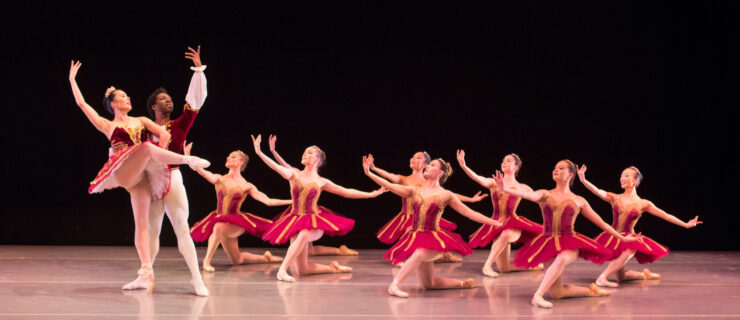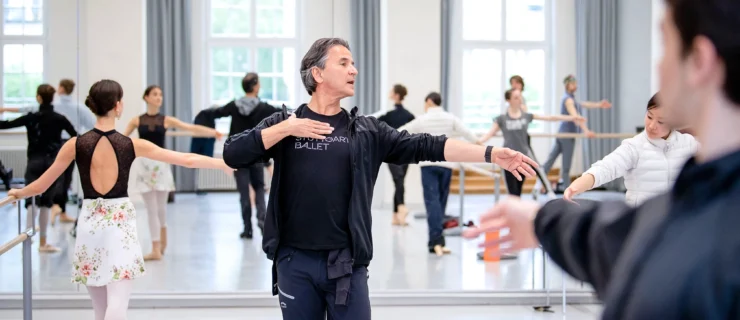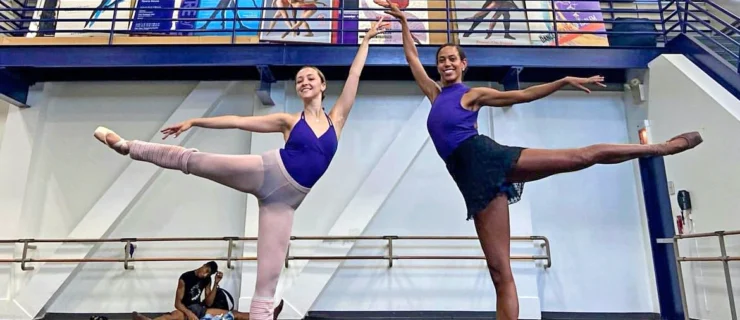Ask Amy: Are Foot Stretchers Safe?
Have a question?
Click here to send it to Suzanne Farrell Ballet dancer Amy Brandt.
Are foot stretchers safe for dancers to use? —Marissa
I’ve often wondered the same thing myself. There are several versions on the market, all promising to improve flexibility by holding the top of the foot in an extreme point. Many dancers swear by them, but to be sure, I asked Boyd Bender, physical therapist for Pacific Northwest Ballet. His advice? Use cautiously, especially if you have feet with flatter arches. “A foot stretcher might create more leverage through the mid-foot and arch area, and possibly create a flatter and more unstable mid-foot,” he says. In other words, too much pressure could overstretch and weaken this foot type, increasing the tendency to roll in. Also, he warns that if you have a history of foot and ankle injuries, use a foot stretcher only in the presence of a health professional to ensure that you’re not causing additional damage.
In addition, don’t expect miracles. “You can only do so much with the structure of the foot,” Bender explains. While dancers can gain some mobility by stretching soft tissues, the biggest determining factor of a pretty point comes from joint mobility—which is much harder to change. “Foot stretchers will only be effective until your foot and ankle reach skeletal maturity, which happens in your late teens.”
I have trouble doing my stage makeup. My eyes look like black holes and my foundation just makes me look tan. Do you have any advice? —Helena
Perfecting the art of stage makeup is tricky business—I could show you some scary photos from my teenage years! But it’s easy once you get the hang of it. First, find the right foundation—a creamy base that leaves a smooth, matte finish works best. If you have trouble finding the proper shade at the drugstore, try a cosmetics store that allows you to test different products.
The eyes require a little more precision and artistry. The key to making them look more open is to go outside of their natural boundaries a bit and play with light and shadow. Use black liquid eyeliner to line the upper lid, extending just beyond the outer edge on a slight upward diagonal (emphasis on slight!). Then, using a sharp, dark pencil, draw a line just below the lower lash, extending straight out beyond the edge. There should be space between the upper and lower lines—do not connect or crisscross them. Fill in the space between the two lines using a white pencil.
Make sure you have at least three eye shadow colors to contour your eye: white to highlight your browbone, a pink or peach shade for the lid and crease, and a dark shade (think chocolate brown, charcoal or smoky blue) for the outside corner. Lastly, apply false eyelashes to the upper lashline.
Try a few practice runs at home until you get the hang of things. For additional help, check out JAM cosmetics, a stage makeup company that caters specifically to dancers. They offer helpful how-to videos and face charts at jamcosmetics.net.
I’ve been studying at the same studio since I was 8. I love my instructors, but I feel like I should be improving more quickly than I am—I just keep hearing the same corrections over and over. Should I consider changing studios? —Savannah
If you don’t feel you’re receiving the training you need, it may be time for a change. However, before you blame your teachers, reflect on your own work habits. If you’re hearing the same corrections repeatedly, you might not be applying them effectively. Class is a two-way street; your teacher is there to provide feedback, but it’s up to you to take in that advice and put it to use.
Of course, you could also benefit from a fresh perspective. Sometimes a new teacher can phrase a correction differently or offer a unique visualization, causing a stale idea to suddenly pop into an “aha!” moment. You could also glean inspiration from a new personality or teaching style. You don’t necessarily need to abandon your studio just yet—test the waters by taking one class a week with someone else, or attend a summer program to gauge where you stand among your peers. But if you feel that your instructors have taken you as far as they can—and you need more—then it might be time to consider making a switch.





